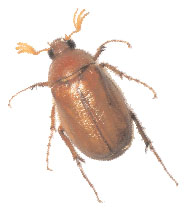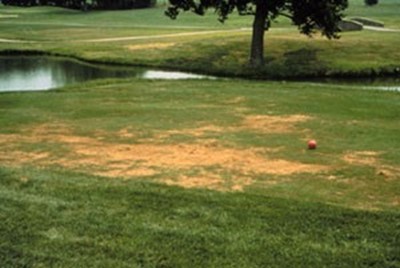By William “Bill” Swantner, Bexar County Master Gardener
June 2023

The month of June is known for three things: the beginning of summer, Juneteenth, and June bugs – technically, the June beetle. While the male June beetles are attracted to light, the female June beetle tunnels 2-5 inches into the ground to lay between 50-100 eggs. When hatched, these eggs become white grubs, also known as larvae, and go through various stages of development called, “instars.” During these various instars, grub worms can damage the roots of plants by feeding on them, but the most severe injury is caused by the final stage, in which mature grubs feed voraciously on roots of plants in the spring.

Signs of grub worm damage include, 1) browning turfgrass, 2) “spongy” feeling turfgrass, 3) evidence that animals are digging holes in the lawn searching for a grub worm meal, and 4) loose soil. To verify if grubs are an issue, dig a square foot area about 2-4 inches deep. If there are 5-10+ grub worms in a square foot of turfgrass, then grub worms are an issue. Any treatment for grub worms should be done in late spring to early summer when the larva are in their final instar. The grub worms will have “hibernated” through the winter and as they come out of “hibernation,” they voraciously consume the roots of plants.

There are two key approaches to treating grub worms. One is a cultural approach and the other is a chemical approach.
Cultural Control: Keep the lawn healthy by 1) mowing regularly; 2) watering deeply but infrequently; and 3) fertilizing appropriately. This can help prevent grub worm infestations. In addition, aerating the soil can make it less hospitable to the grubs.
Chemical Control: Insecticides can be used to kill grub worms. However, it is important to choose a product that is labeled for grub worm control and follow the label instructions carefully. Also, keep in mind that some insecticides may harm beneficial insects or pollinators.
Photos 1 & 3) White Grubs in Texas Turfgrass (tamu.edu)
